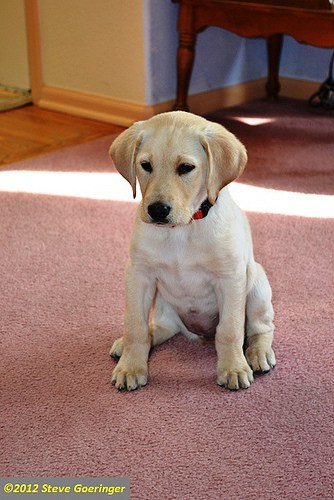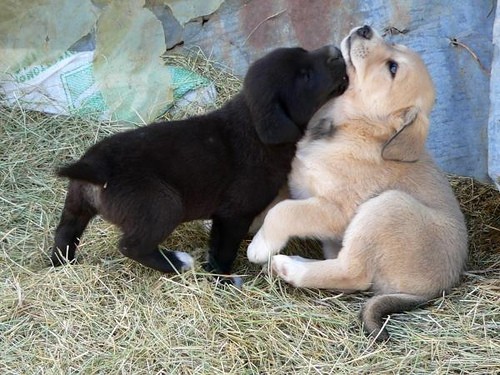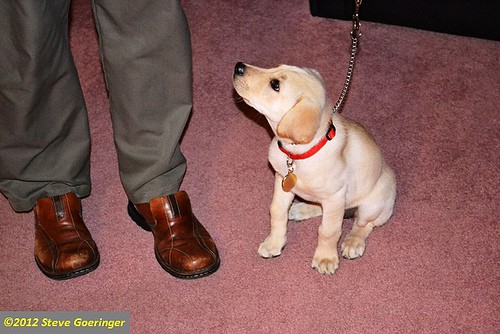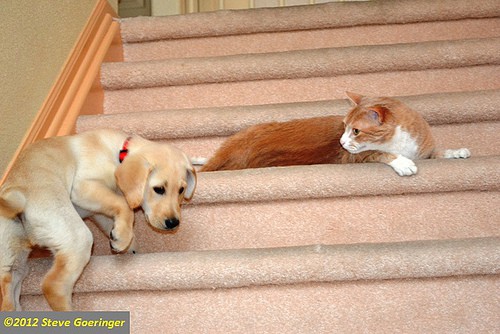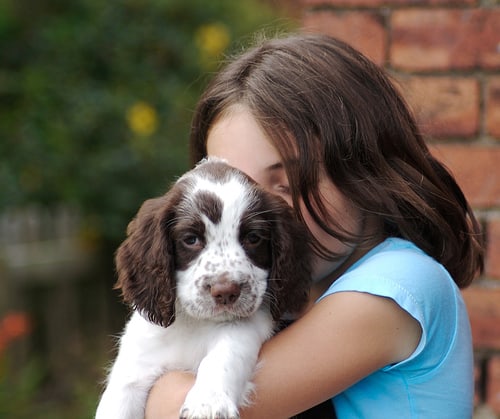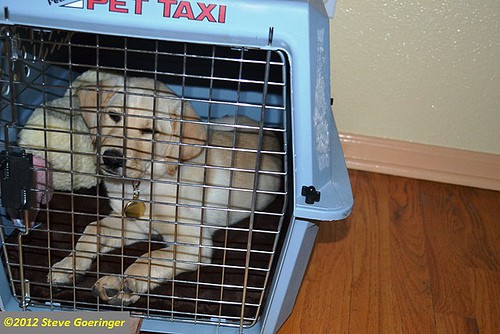Dogs
Training your new puppy
It is important to begin training your puppy as soon as he has settled into his new home. A puppy will take a day or so to settle into their new surroundings. You can begin training or you can join local classes. Local classes can be another way of helping socialise your dog with others, but you need to make sure that your pup has all of his vaccinations before he meets other dogs, as there are a few canine diseases that could seriously harm or kill him, especially if he is not properly immunised. Various types of training are available. Generally, most owners want to do a bit of behavioural training and some obedience training. Training needs to be fun and rewarding, as dogs do not react well to any form of punishment.
Behavioural training for your puppy
The main reason to consider behavioural training is to prevent bad habits from developing. Dogs are highly social animals that have a strict pack order, and your puppy expects you to be the alpha pack leader. There are many forms of bad behaviour that your dog can develop from jumping up on people, begging for food, chewing, climbing up on furniture, barking, and chasing other animals. Being consistent when training your pet will ensure that some of the behaviours can be stopped before they start. Do not pet your puppy when he jumps up on you as a puppy as you are rewarding the behaviour. Ignore the bad behaviours and praise and reward the behaviours that you want your puppy to display. Dogs are eager to please, and you are trying to work with the dog’s natural instincts to improve their behaviour. Training and proper exercise will help you communicate with your puppy and can mean the difference between failure and success. Certain breeds have specific behaviours that they are bred for. For example, an Australian Cattle Dog will have been bred to herd, making him want to run and round up things, so he will need plenty of exercise and will need his mind to be kept active as he will be intelligent compared to a toy breed.
Obedience training for your puppy
If you want your puppy to sit or lie down on command, then this is referred to as obedience training. There are other common commands such as leave, come, and walking to heel that will be important to teach your puppy. Training time should be short for young dogs, perhaps only as little as 10 minutes every day to begin with, where you focus on training. Your pup will become bored and tired if the training session is too long. As you puppy gets older, the training sessions will become longer and more frequent.
Puppy training aids
First of all, you need to be patient, and remember that consistency, timing and repetition are crucial for successful training, which should be supported with using some form of reward. Treats are often used to encourage a dog to learn the commands. You should also purchase a good collar, dog cage, and lead. A leash should be sufficient to hold across both hands and not be an extendable type. You will need to hold the leash with your dog to your left hand side, so you will be checking your puppy with your left hand, holding on to the loop of the leash in your right. Some people prefer to use a clicker rather than food treats. This requires a slightly different approach, but can be equally successful. For working dogs, whistles can be more appropriate as the dog can hear the noise over a larger distance when out in the field or in the woods.
Puppy training tips
A treat should only be given as a reward as soon as the command is completed. Each command should be preceded by the dog’s name. You can also encourage your puppy to look at you by using the command “me” and rewarding him when he looks at you. You can encourage him to look at you by using a treat in your right hand to get his attention and raising your hand to your eye level while saying his name and the command. As soon as he looks at you, provide the treat and praise him. Make sure that you use treats that are not the same as your puppy’s food. Each treat should be small and you should keep a supply of them on you in a pocket or small bag attached to your belt so that they are in easy reach. As your training develops, you will reduce the reliance on food treats and use verbal commands and patting your dog as reward. When speaking commands, they need to be short and specific such as “sit” or “stay.” Make sure you use the same words for the same command. Remember that your puppy will pick up on the inflection of your voice, so do not speak in a frustrated tone or shout because your dog will pick up on your mood and will be unsure of how to proceed.
Disciplining your puppy
Dogs crave discipline in leadership. This is not about striking out at your dog. It is about providing challenges that exercise your dog’s mind and increase the pack bond between you and your pet. Dogs need leadership structure to survive. Boundaries and leadership will always be tested as your puppy wants to establish how he can become the leader of the pack. If you are a weak pack leader, your puppy will establish himself as the new pack leader.
Teaching your puppy
Your puppy will react to different situations in a different way. Every exposure to stimuli will help him learn. To ensure that you pup grows up as a well-adjusted pet you will need to ensure that you expose your puppy to many different situations from walking by busy roads to be exposed to traffic noise, walking in the country and walking along a busy shopping street to become used to other people. If you live in the town, visit the countryside, and vice versa.




